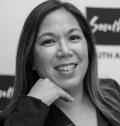Tourism in South Africa holds a great host of opportunities. Not just in terms of the scenic beauty, safaris into the wild or cultural exploring for visitors from all over the world but, more importantly, for our own people and the localised economic development it brings.
At the moment, there’s very little information on the emerging domestic market in South Africa. This market, consisting mostly of black middle-class patrons, is still very much untapped in travel. Although Unilever did a study in the early 2000s and labelled the group the ‘Black Diamonds’ due to the collective spending power, travel was never part of the in-depth research conducted.
On a global scale, Euromonitor International, Skift and other great leading industry specialists highlight the global traveller trends – how to talk to the millennials or Generation Y or the other segments, but there is no quick guide to adapt that advice to our own South African segments falling within these broader categories – i.e. the South African millennial might have a unique aspect different to the global millennial due to specific domestic influences such as Internet limitations, location, affordability as well as the absence of a culture of travel. We are realising more and more through our dealings with the emerging markets that what we need is specific details about the Black South African middle-class market.
What we have found over the last few years, is that very few in the South African travel arena are currently talking to this market effectively — not in a way that makes travelling in their own country appealing. Findings from a number of sources, including South African Tourism, Stats SA, as well as from our own radio station Kaya FM and through the reality travel TV show we produced with Tourism KZN concerning first-time travellers and what they can do at different destinations, was most enlightening.
One interesting factor we’ve found while investigating the research available to us, is that too often the emerging black middle-income group is boxed in one big segment for their combined potential spending power. While credit needs to be given to the researchers who came up with the ‘Black Diamonds’ term for the in-depth research done, grouping a segment of this size together has done the market an injustice. The sub-segments are so vastly different that it’s simply wrong grouping this market together: the spending habits vary, the planning phase cannot be compared and their approach to travel specifically is vastly different across the sectors.
The demographic shift is one of the big trends reshaping travel in South Africa. With the increase in income levels, first-time travel is on the rise. But the rise in disposable income isn’t the only factor to consider.
The ease of access to planning and booking, social media and digital tools (such as smart phones and tablets) are also motivators. As travel brands, we need to adapt to this emerging domestic market customer so that, in turn, they will be drawn to travel or use attractions/facilities and certain services more often. However, they don’t want to be treated as ‘beginners’. These new travellers want to experience products and services tailored to suit them, without seeming like they’re receiving a watered-down version or entry-level treatment. The key is to find a balance.
During the upcoming Attractions Africa conference, I will be addressing these issues. Looking at case studies from Thebe’s platforms, such as Kaya FM and Holiday Swap, and combining the findings with research from SA Tourism and other sources. My aim will be to highlight key factors from the emerging domestic market that will help us learn how we, as attractions, can drive the transformation in the domestic traveller.



















